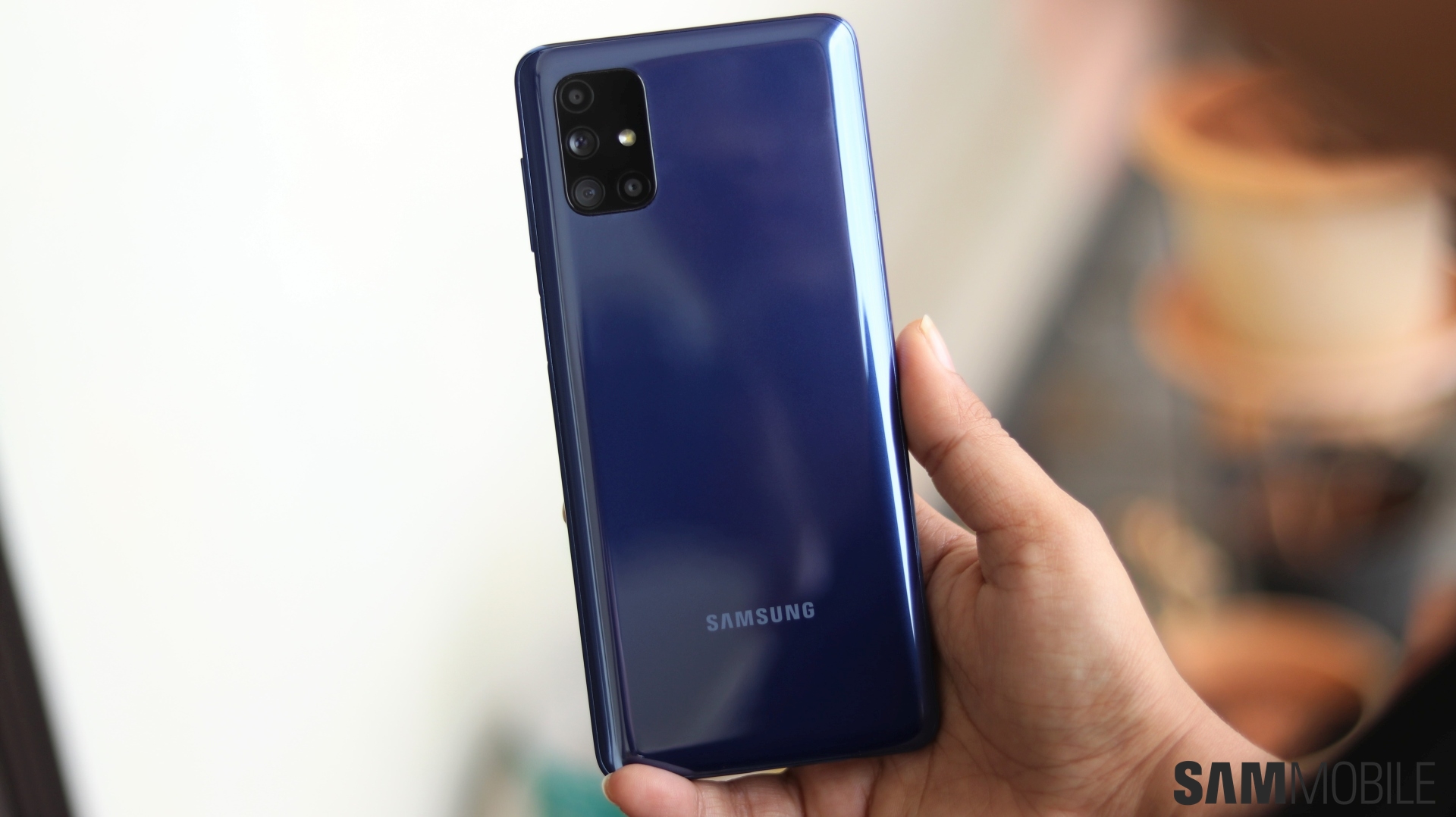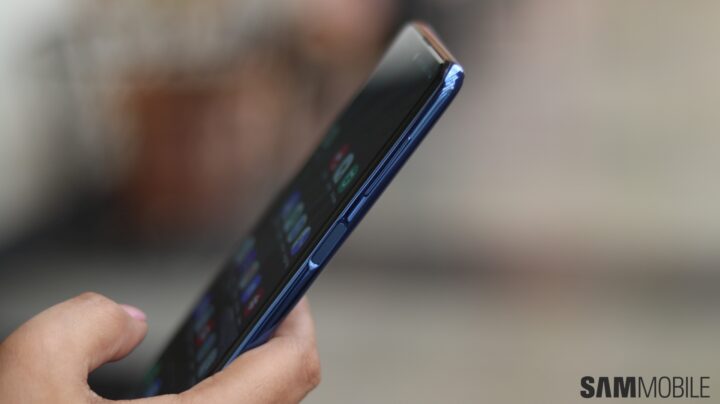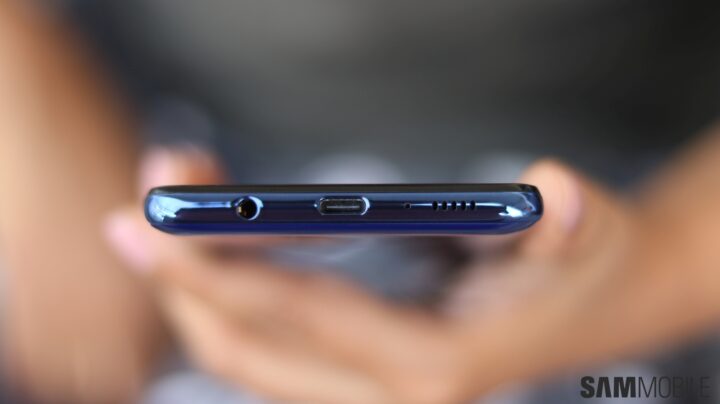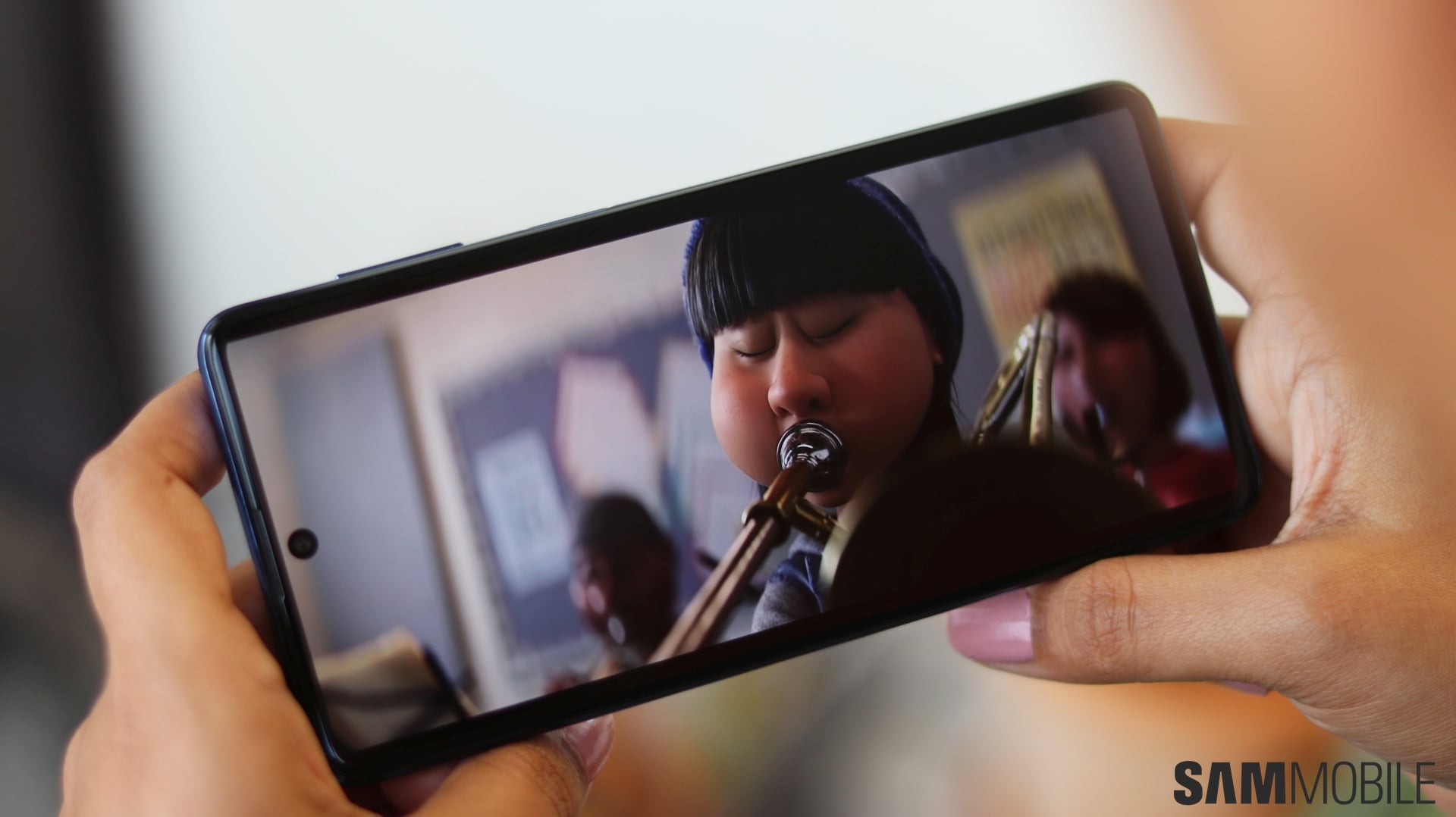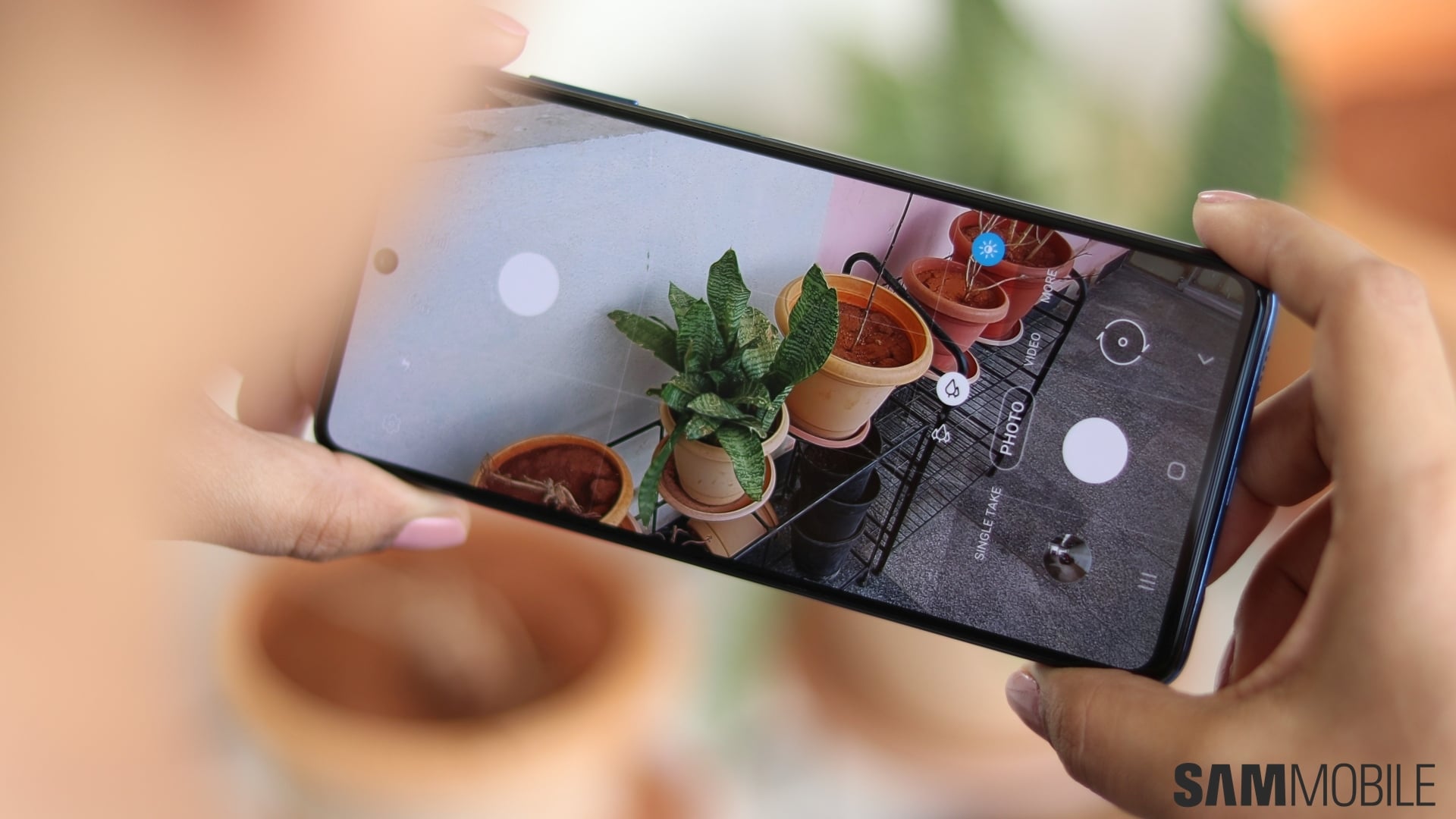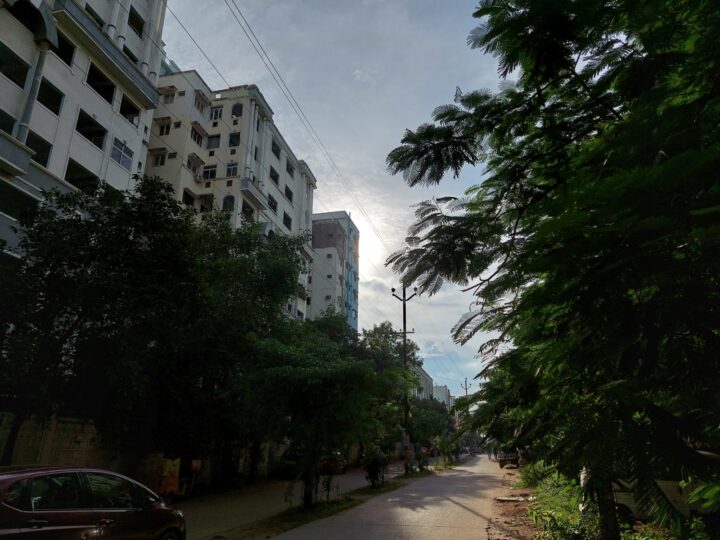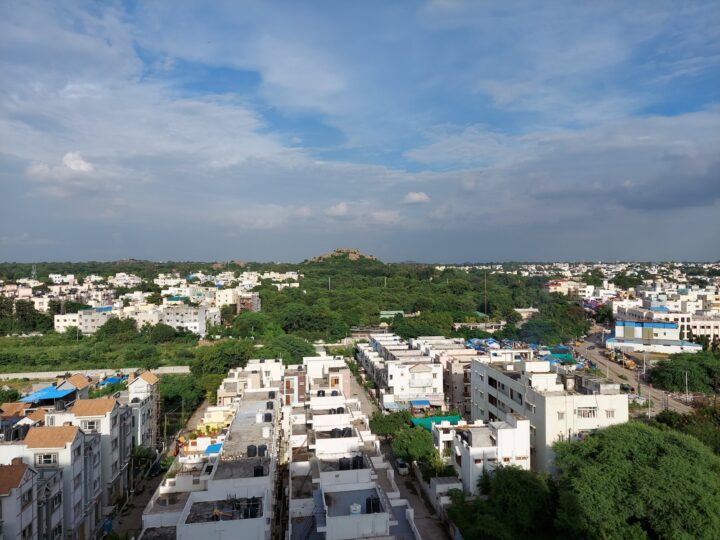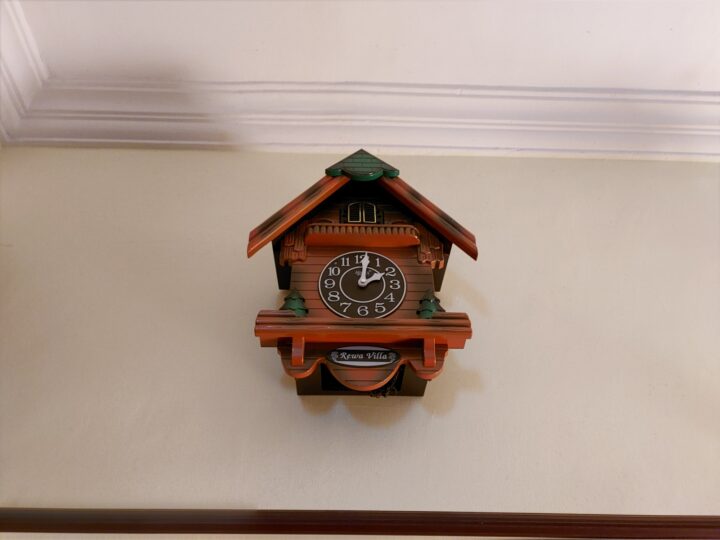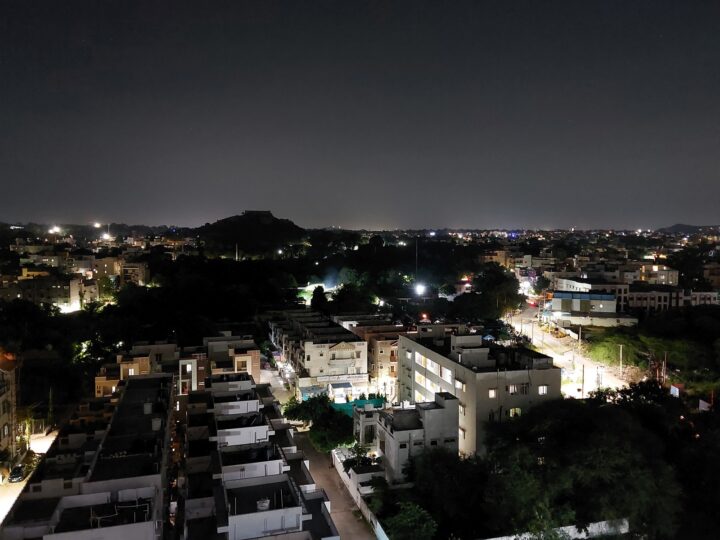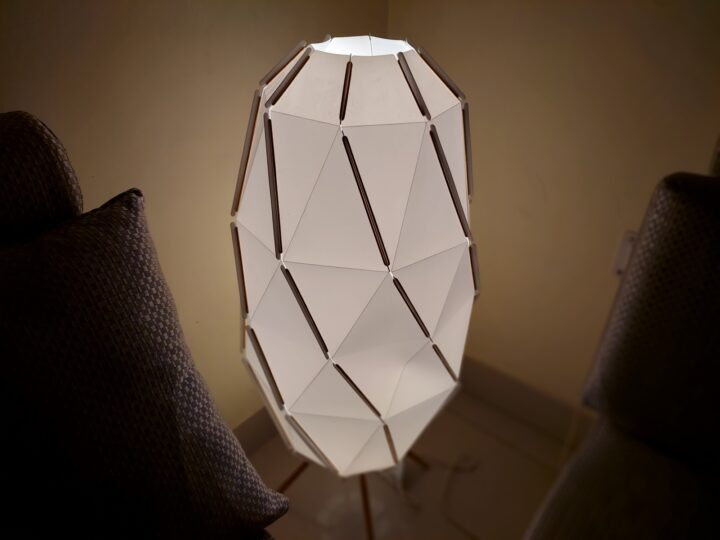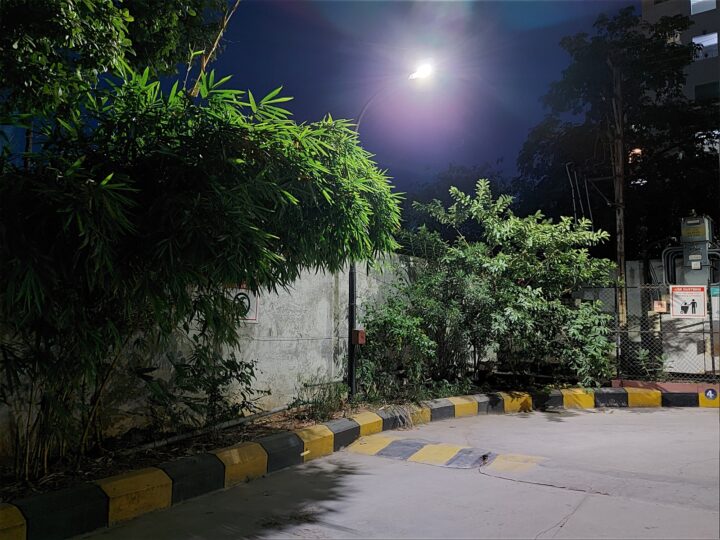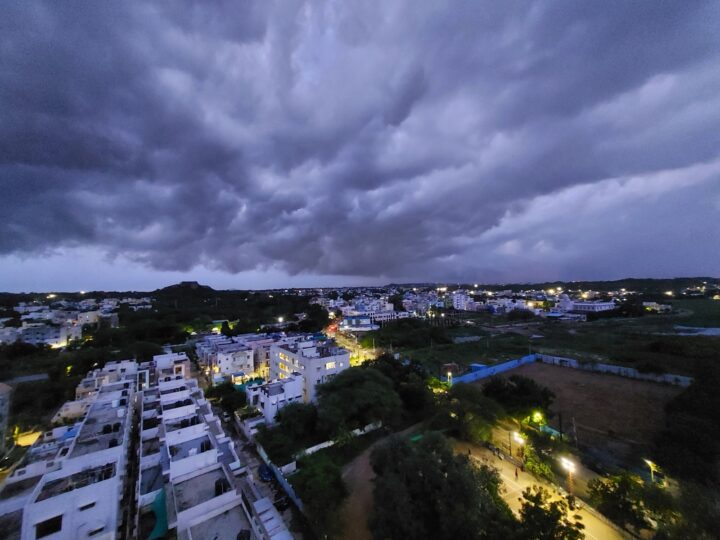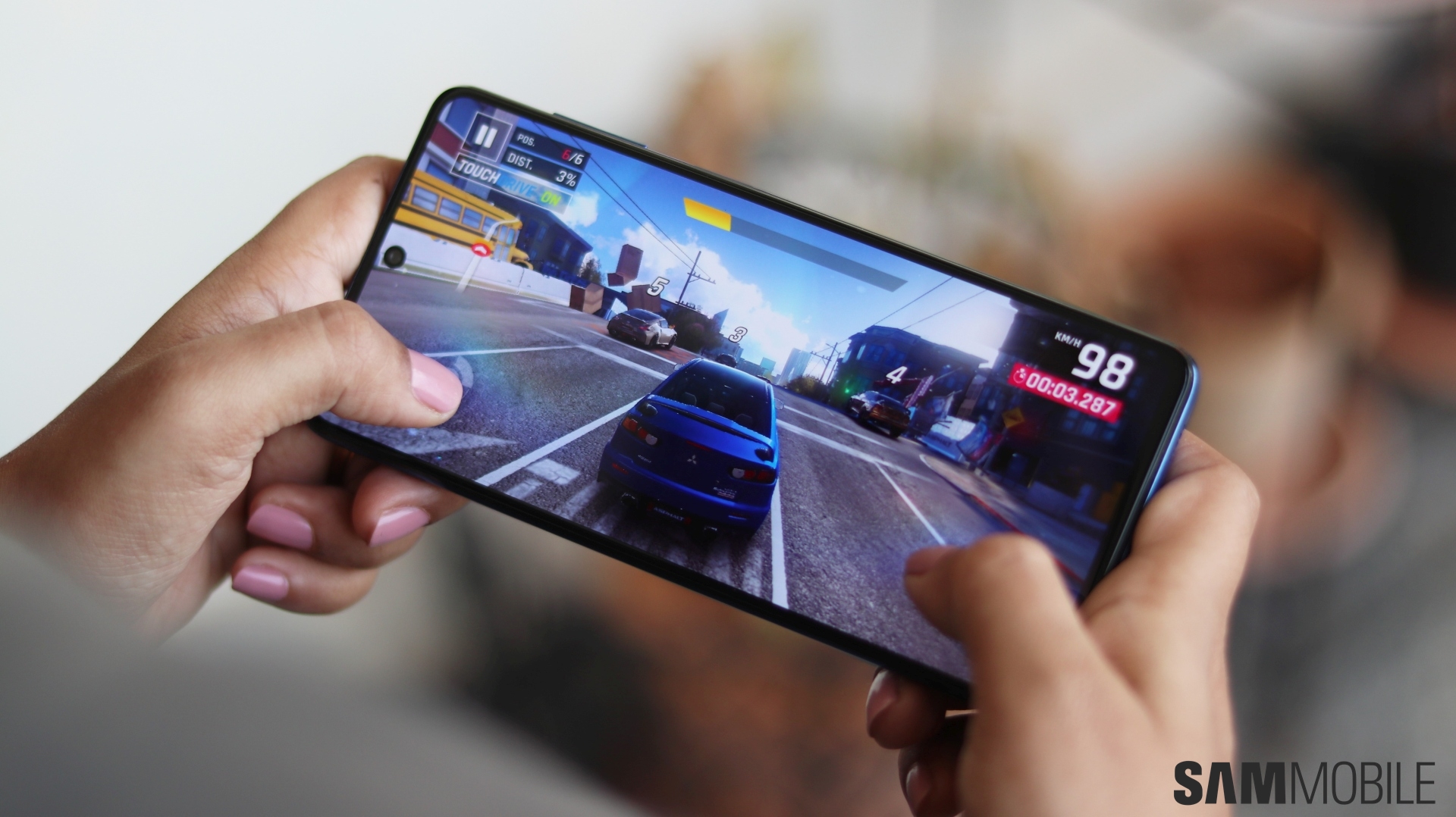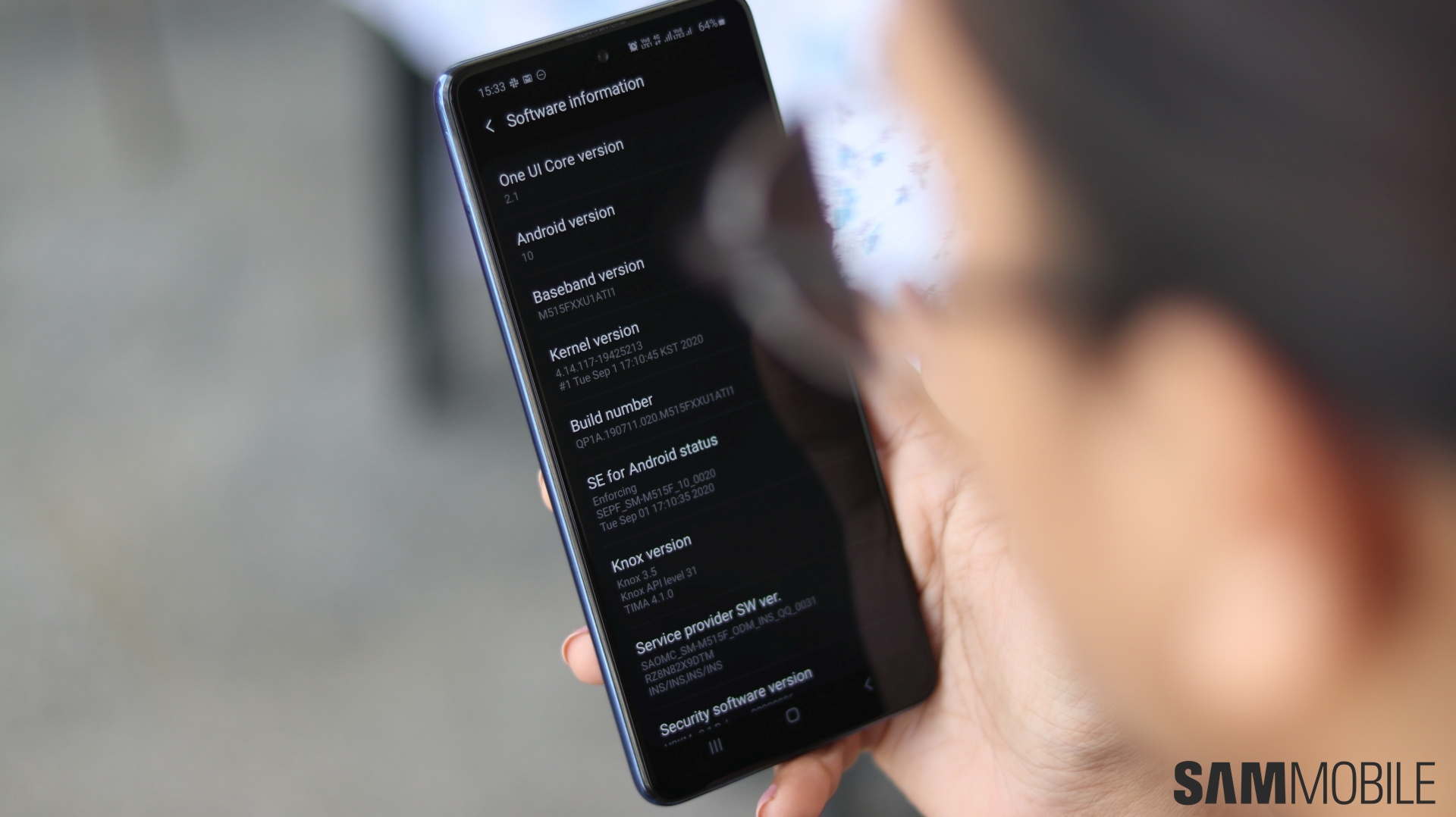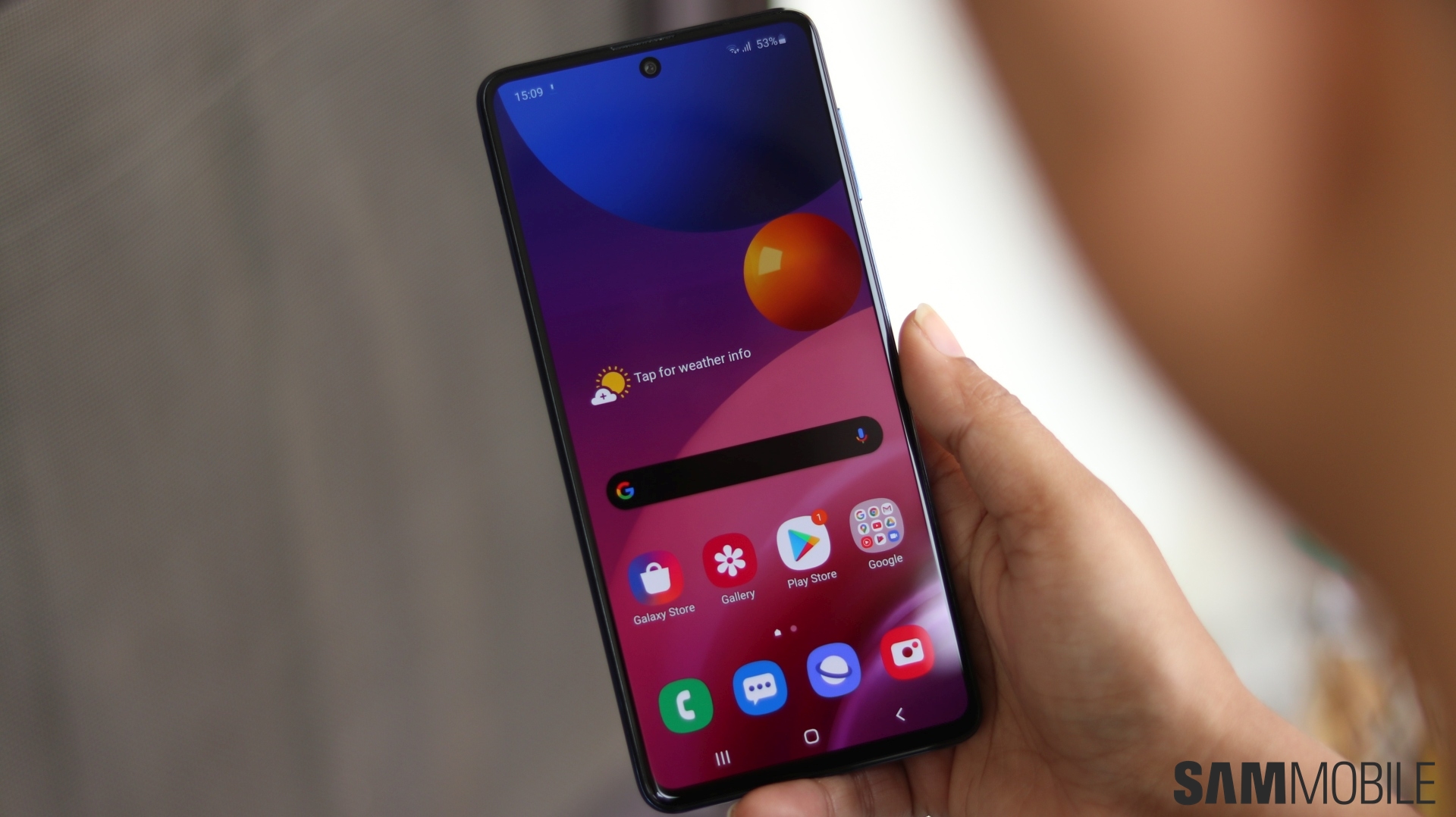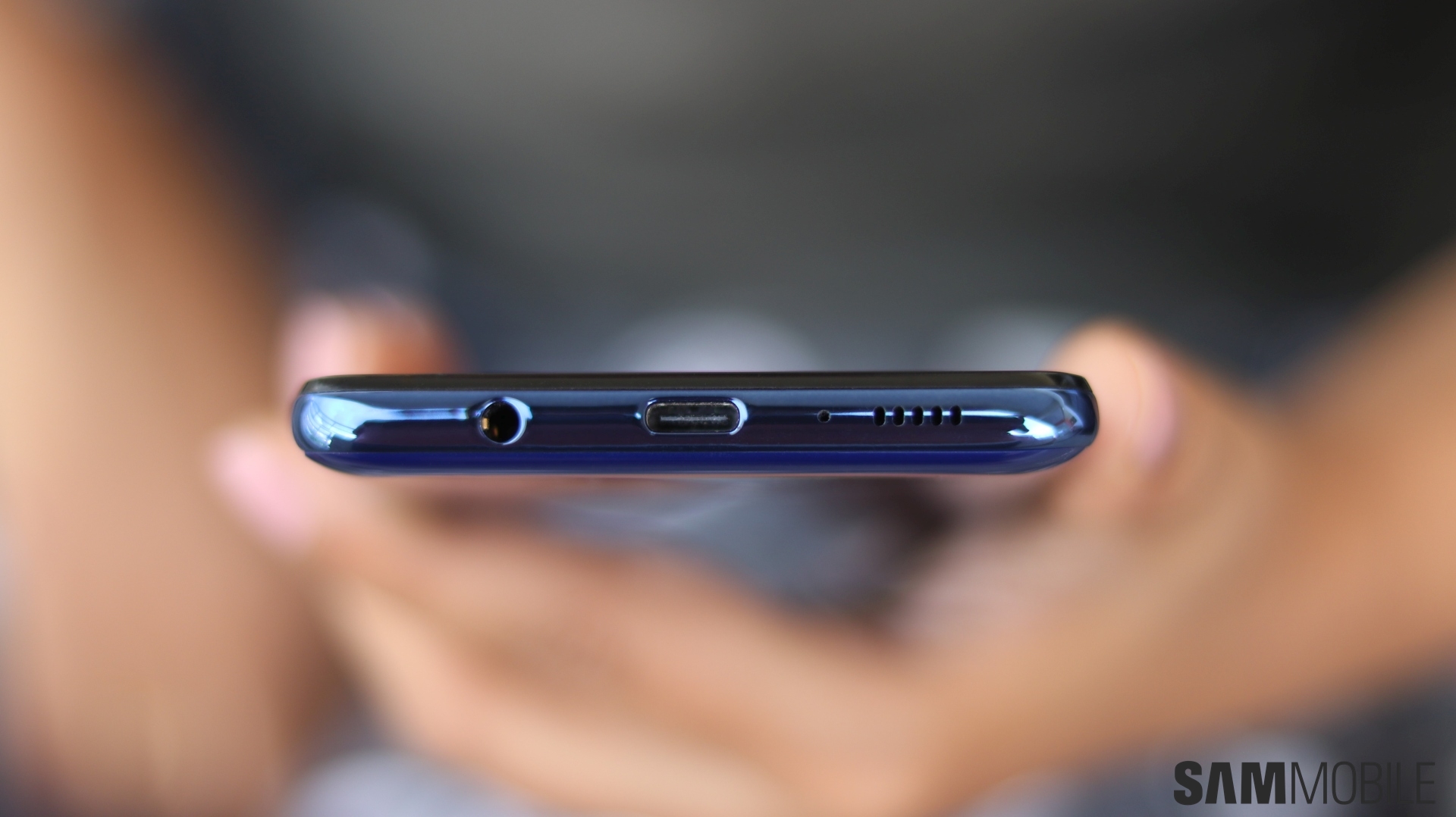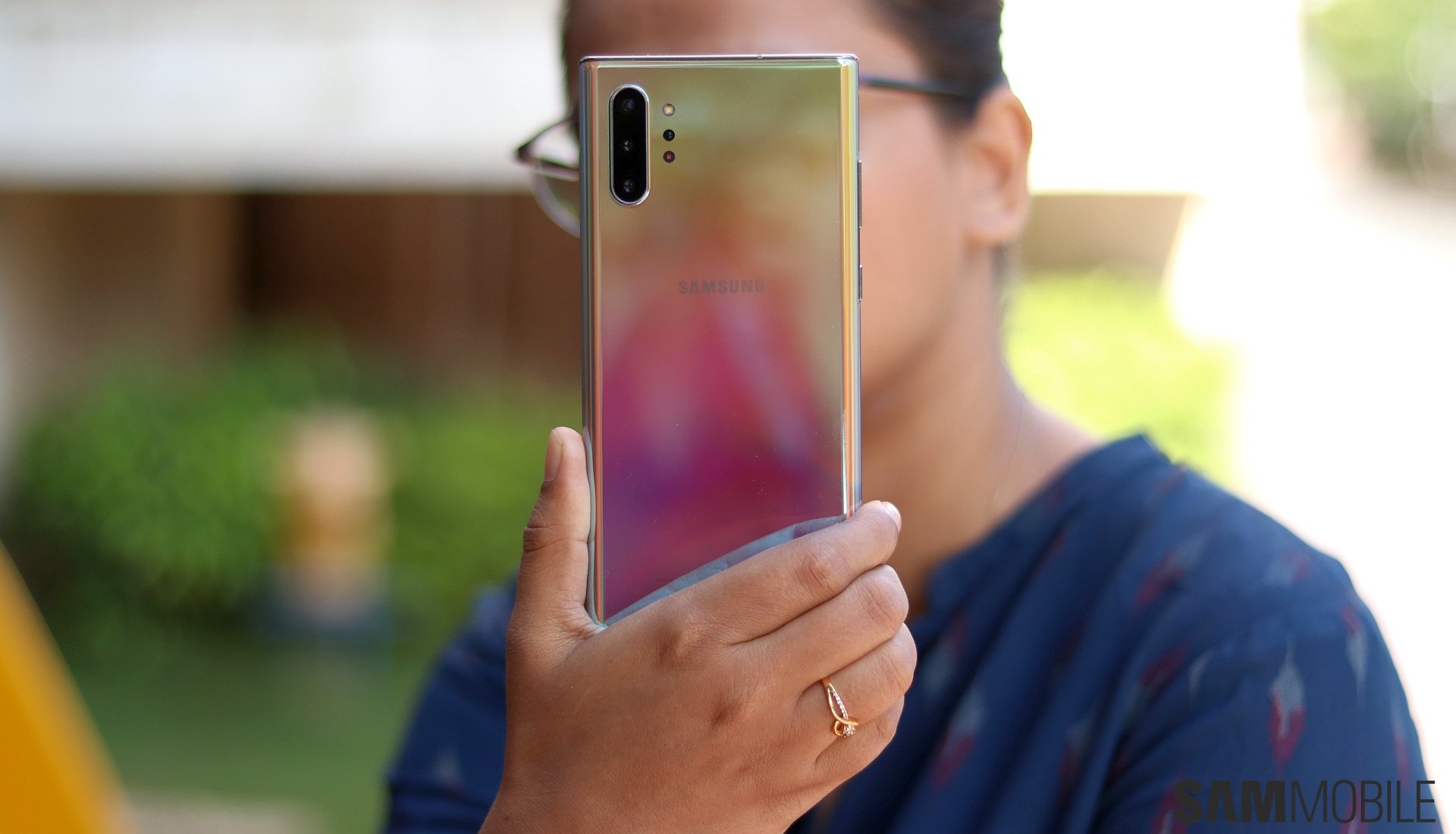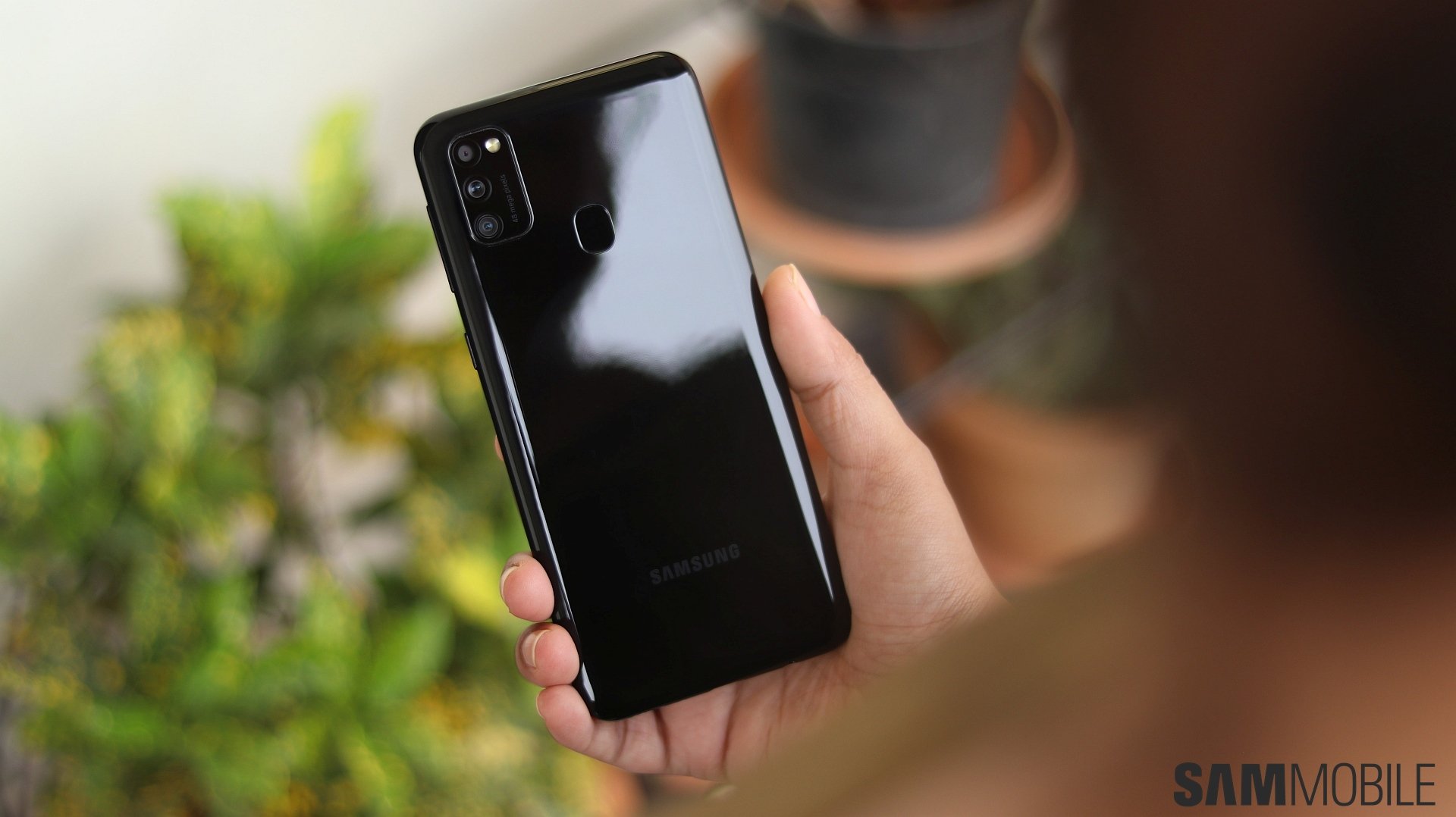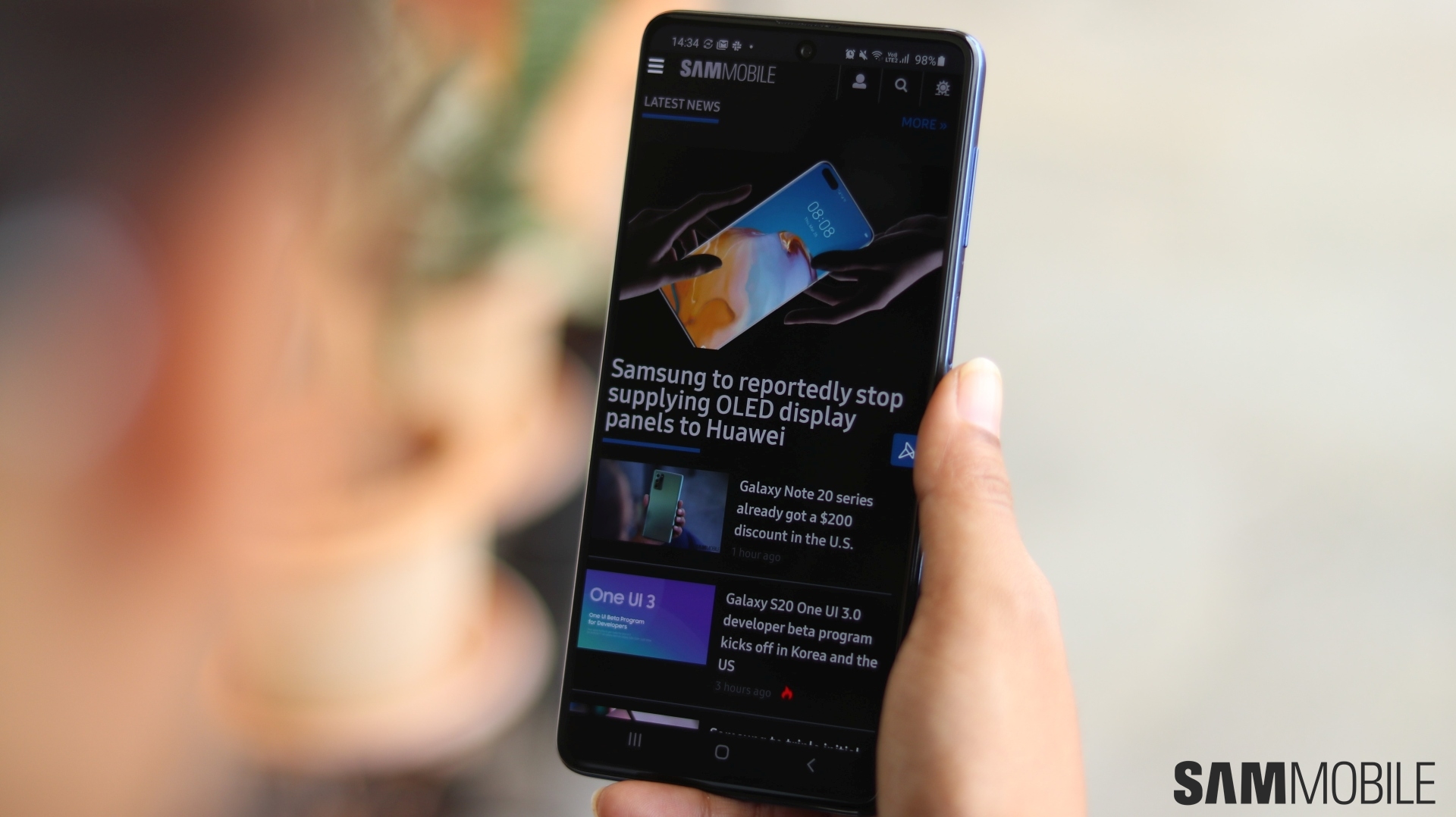
All recent Galaxy M phones have been fantastic value for money – does the Galaxy M51 have what it takes to carry that momentum forward? Let's find out in this review.
Design
The Galaxy M51's design is easily its weakest part, because Samsung is using the same old boring-looking plastic back as it does on its cheapest M series phones, with no gradients or any other visual wizardry in place. There's nothing wrong with that, but if you're someone who expects the look of a phone to be proportionate to its price tag, then the Galaxy M51 will not impress you. Still, other than the added weight because of the 7,000 mAh battery, the phone feels similar to other Galaxy phones with plastic rear panels – not cheap, not premium, but somewhere in between.
Speaking of weight, the Galaxy M51 is pretty chunky, though the phone's battery life (more on that later) makes it easy to ignore the thicker and heavier profile. At the front, there's a 6.7-inch Infinity-O Super AMOLED Plus display with a centered punch hole, meaning there are minimal bezels and the M51 looks similar to any other recent smartphone from Samsung. The fingerprint scanner is embedded in the power button and is ultra quick and accurate, as all capacitive fingerprint sensors are.
For those wondering, the Galaxy M51 has a headphone jack, though you won't get a pair of earbuds in the box. You do get a 25W super fast charger, along with a USB-C to USB-C cable that can also be used to charge other phones using the M51 (this feature is available on all Android devices if you use a USB-C to USB-C cable and isn't specific to the Galaxy M series).
Display
All M series phones have beautiful AMOLED displays, and that hasn't changed with the Galaxy M51. Its 6.7-inch display has lively colors, deep blacks, and high brightness levels. I did notice slightly deeper contrast on the M51 compared to the M31s, but otherwise, the viewing experience on all of these phones is great, and the M51 makes things better thanks to its larger screen. The camera punch hole is slightly larger here than it was on the Galaxy M31s, but unless you're comparing the two side by side, that won't bother you. In short, the display on the Galaxy M51 is excellent for all kinds of use cases.
Cameras
The Galaxy M51 has a 64MP main camera, a 12MP ultra-wide camera, and 5MP macro and depth cameras at the back, and a 32MP front camera, same as the Galaxy A71. The main camera takes excellent daylight photos, with lots of detail, fairly wide dynamic range, and accurate color reproduction in most scenarios. Nighttime performance is also solid as long as there is plenty of artificial lighting around, while low-light pictures tend to be somewhat soft and noisy. Night mode comes to the rescue in such scenarios, and you can also manually control the shutter speed in Pro mode for even better results.
As for the ultra-wide, macro, depth and selfie cameras, I didn't see any difference between the Galaxy M51 and Galaxy A71, so I'll suggest looking at the latter's review for more details. The M51 also has plenty of camera modes, including the nifty Single Take mode, Hyperlapse, Super Slow-mo, and Panorama. AR Emoji is included as well; you can also create custom filters based on existing photos with the My Filters feature. Video recording goes up to 4K resolution and quality is more than adequate – there's sufficient detail and noise is controlled well, as long as it isn't too dark.
Performance
The Galaxy M51 is the second handset in the series to be powered by a Snapdragon processor (last year's Galaxy M40 was the first). There's a Snapdragon 730G under the hood, and it makes the M51 the fastest and smoothest Galaxy M phone yet. The Exynos 9610/9611 used in other devices in the series is good with gaming but can't always keep the stutter out of general navigation and user interface animations.
The Snapdragon 730G has no such issues and barely ever allows the phone to slow down. Gaming performance is also better – I cranked all the graphical options in Call of Duty to max and saw very few frame rate drops. With the Exynos 9611, you need to stick to the default graphic settings to be able to get a smooth and consistent frame rate. PUBG should run similarly well, but with the game recently banned here in India, I was unable to test it for this review.
Software
I feel Samsung has dropped the ball with the Galaxy M51's software. It runs One UI 2.1 Core out of the box, and while you have many of the latest features, such as a built-in screen recorder and a full-fledged Pro camera mode, you miss out on both Samsung Pay and Samsung Pay Mini and features like Secure Folder. And it's impossible to get them even with a software update because the M series phones lack Knox certification and are, therefore, not as secure as they need to be for those apps to be made available.
Previous M series phones were considerably cheaper, so it was easier to overlook the stripped-down software. Not so with the Galaxy M51. It's also worth noting that the M51 will likely get only two major Android OS updates while the Galaxy A51 and Galaxy A71 are promised three. We had expected that the software would keep step with the increasing price tags of Samsung's Galaxy M devices, but that's clearly not the case.
However, while it's not the full package, the base One UI experience is also pretty great and has plenty of features. There's the aforementioned screen recorder, themes support, Dual Messenger, One-handed mode, Always On Display, life-to-wake and double-tap-to-wake gestures, Dark mode, and the excellent Quick Share and Music Share introduced with the Galaxy S20 lineup earlier this year. For everything else, there's always the Google Play Store and Samsung's own Galaxy Store.
Battery life
With a 7,000 mAh battery powering the M51, it should come as no surprise that this phone simply cannot be killed in a single day even with the heaviest of use. That holds true for both Wi-Fi and mobile data – I turned off Wi-Fi for an entire day and still had around 45% charge left after 24 hours. That's not something you can say about a lot of phones. Idle drain is more or less non-existent thanks to the humongous battery capacity, and the best part is that charging is super quick as well.
The included 25W charger can top up the battery completely in a little under two hours. I plugged in the phone when it was down to 4%, and it went up to 36% in 30 minutes, 64% in 60 minutes, and 87% in 90 minutes. As cringy as it feels to repeat one of Samsung's official marketing slogans, the Galaxy M51 really is a monster when it comes to battery endurance, and nothing else in Samsung's galactically large smartphone lineup comes close.
Audio and call quality
The single bottom-firing loudspeaker on the Galaxy M51 is not very loud – a positive side effect is that it never distorts, but that's only if you follow the glass-half-full philosophy. You also don't get earphones in the box, so you will have to use third-party ones. Dolby Atmos is included and helps increase stereo separation both over wired and Bluetooth earphones, and it's perhaps the only saving grace when it comes to the audio experience on any M series phone, including the M51. Call quality is good as well, with no issues with network reception on either SIM slot.
Verdict
On the hardware front, the Galaxy M51 is splendid and easily replaces the Galaxy A71, which was already an excellent phone, as the best upper mid-range device available from Samsung. The monstrous battery life makes it even better than the A71, in fact, and if the spec sheet is all that matters to you and the Galaxy M51 fits your budget, you can buy it with your eyes closed. You won't regret it.
But the Galaxy A71 is still a superior choice if you want functionality like Samsung Pay. It is also one of only two mid-range phones Samsung has confirmed will get updates till Android 13, while the M51 is likely to get only security updates after Android 12. If you want more features and longer software support, saving up and getting a Galaxy A71 would be the more sensible thing to do.
[modelinfo model=SM-M515F]
Samsung Galaxy M51
What we like
- Excellent 6.7-inch Infinity-O Super AMOLED Plus display
- 64MP camera takes great daylight photos, fairly good nighttime photos
- Great performance from the Snapdragon 730G chipset
- Stupendous battery life, super fast charging
- Ultra quick side-mounted capacitive fingerprint scanner
- Solid pricing
What we don't
- Low-light photos could be better
- Macro camera needs a higher-resolution sensor
- Speaker too quiet
- Limited software, no Samsung Pay support
- Boring design












